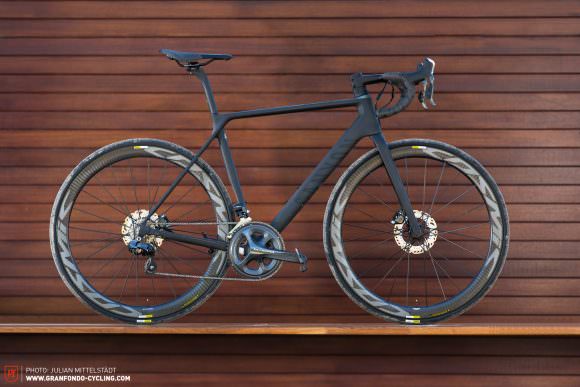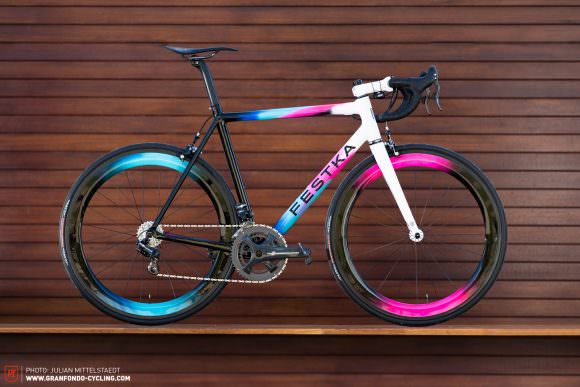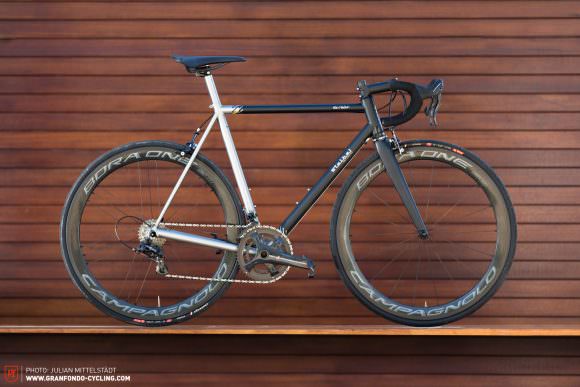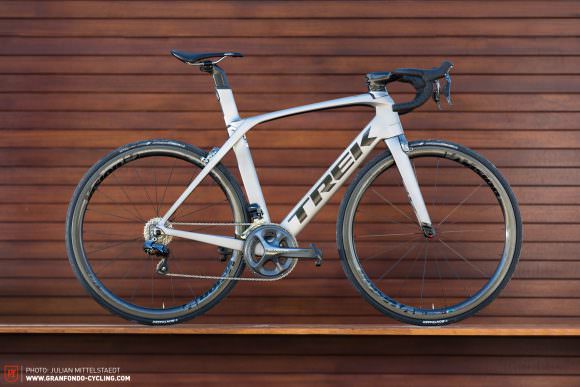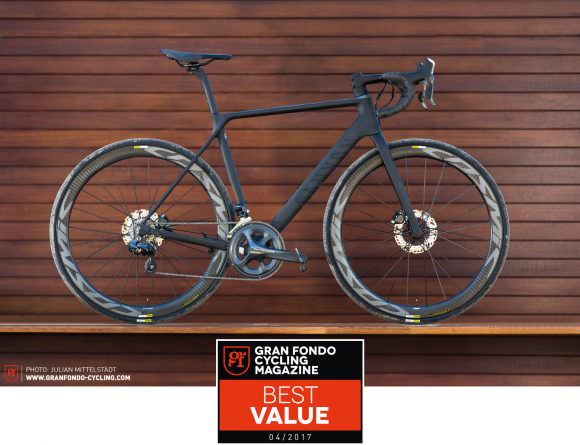Sometimes the truth is hard to believe, especially when it completely contradicts our expectations and experience. Much like the outcome of this issue’s group test, which saw us spend an exhausting week bike testing in Mallorca, putting 12 of the most exciting and exclusive bikes through their paces to see which one is most suited to the European bike Mecca. The results were downright perplexing!
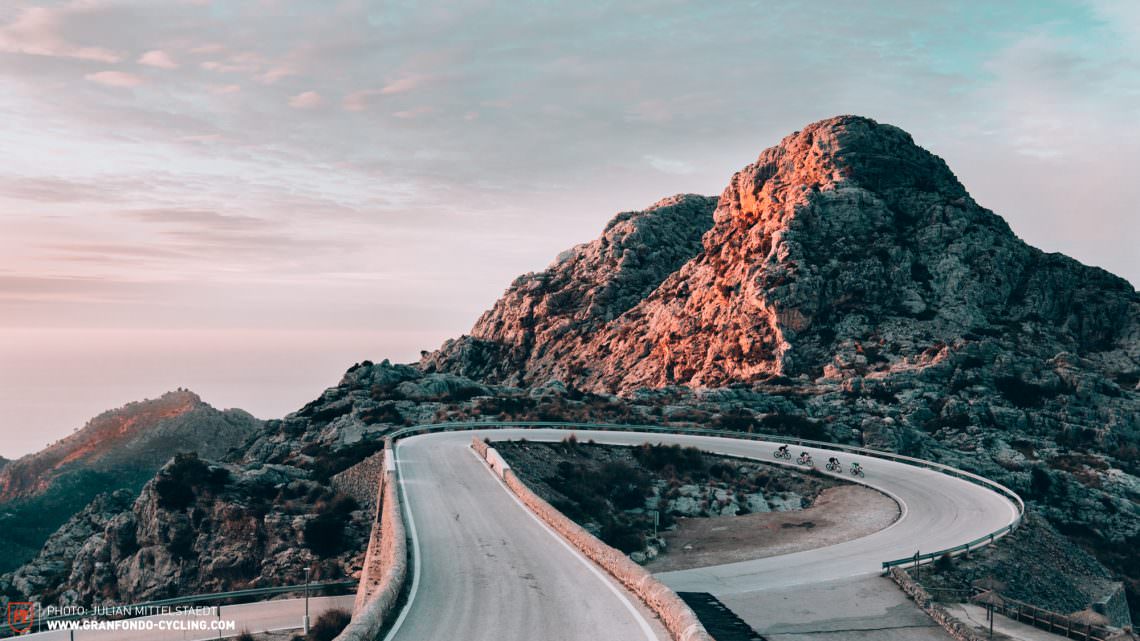
The Mallorca myth goes something along the lines of ‘those who’ve been to Mallorca will always return.’ And those that haven’t, definitely should. The Spanish island has become a well publicised secret for riders from cooler climes, a must-visit pilgrimage for countless western Europeans as part of their pre-season training. Looking beyond the trashy bars and club reps, this compact island serves up incredibly well-maintained roads, decently proportioned climbs, aromas of almond blossom and so many bike rental places that the market is truly in favour of the consumer. Sound like fun? Don’t just take our word for it; try it. Our base was the tranquil town of Alaró in the centre of the island, from where all of the gems splay out like spokes. The test routes had it all, with burning climbs up the mountain range in the west and exhilarating descents down to Sa Calobra and the ruggedly beautiful Cap de Formentor.
The test fleet – the million-dollar choice of material
How will carbon bikes fare against long-standing steel and aluminium counterparts? What are the actual tangible differences between a bike costing €15,000 and one for €2,500? Are disc brakes really better than rim brakes? Our aspirational pursuit of the ultimate road bike for mere mortals was eye-opening, enlightening and intense with endorphins (plus the odd Strava trophy too). We could be accused of picking a poorly chosen test fleet – one that’s just so broad that you’d argue it’s unfair to pitch these bikes against each other. However, we’re convinced that these 12 select models actually reflect the genuine state (and scope) of bikes on the market; as such, our findings proffer textbook direction for those looking to buy a new bike. Plus, the inclusion of lesser-known or more affordable bikes means that it isn’t just the big players who can bat for the test win.
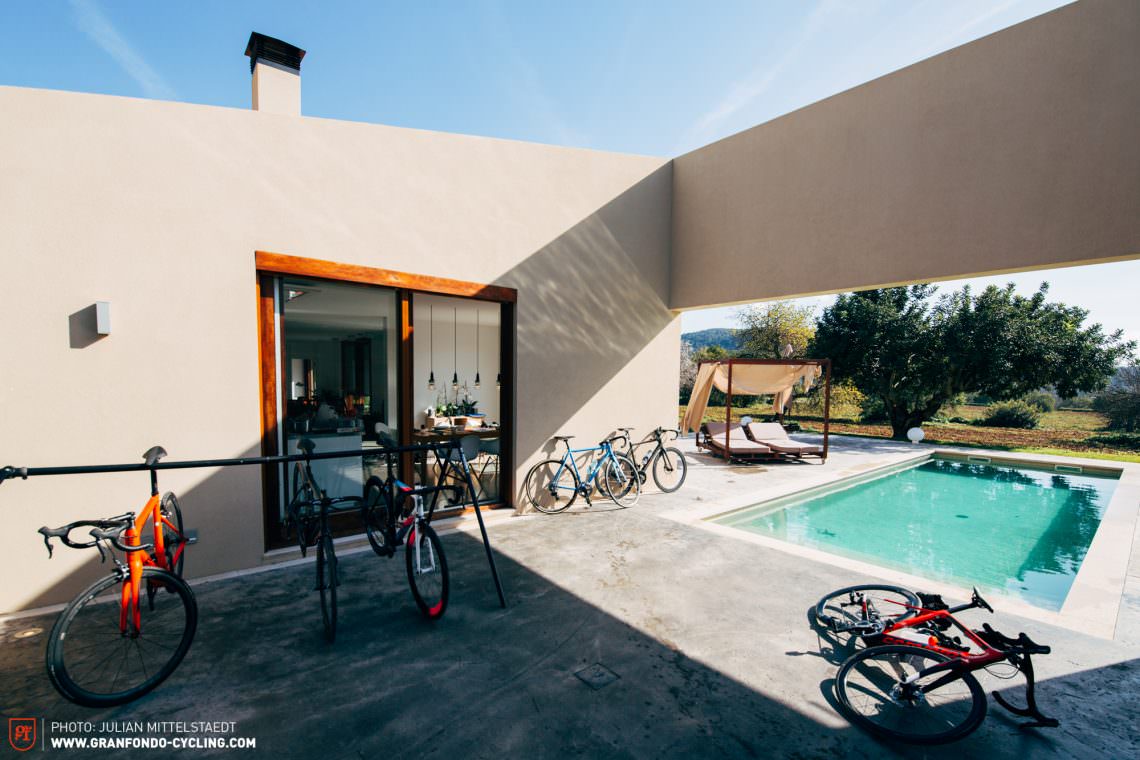
| Bike | Groupset | Weight | Price |
|---|---|---|---|
| BMC Teammachine SLR01 | Shimano Ultegra Di2 | 7.17 kg | € 6,499 |
| Cannondale SuperSix Evo HiMod Ultegra Di2 Disc | Shimano Ultegra Di2 | 7.31 kg | € 4,999 |
| Canyon Ultimate CF SLX Disc 8.0 Di2 | Shimano Ultegra Di2 | 7.70 kg | € 4,899 |
| Cervélo S3 Disc Ultegra Di2 | Shimano Ultegra Di2 | 7.78 kg | € 7,299 |
| Festka Spectre Space Odyssey Edition | Campagnolo Record EPS | 7.00 kg | € 13,999 |
| Giant TCR Advanced Pro Disc | Shimano Ultegra Di2 | 7.73 kg | € 4,199 |
| Heroïn H1 Limited Edition | Shimano Dura-Ace Di2 | 7.15 kg | € 14,900 |
| Lapierre Xelius SL 700 Ultimate | Shimano Ultegra Di2 | 7.40 kg | € 4,999 |
| Rose X-Lite CDX 8800 | SRAM RED | 7.11 kg | € 3,949 |
| Standert Kreissäge | SRAM FORCE 1 | 7.66 kg | € 2,499 |
| Stelbel Antenore | Campagnolo Super Record | 7.92 kg | € 7,200 |
| Trek Madone 9.5 Ultegra Di2 | Shimano Ultegra Di2 | 7.45 kg | € 7,999 |
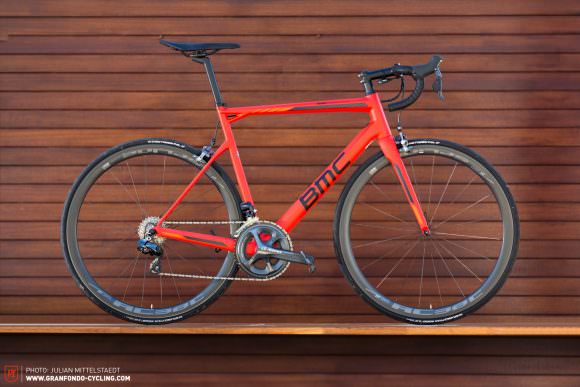

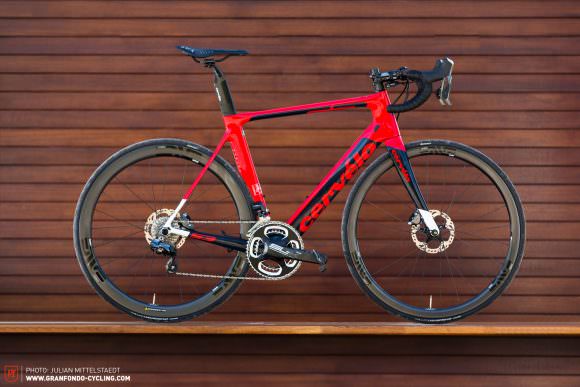
What are the fundamentals of a good race bike?
Once in Mallorca, any attempts for speed records have to counter in certain factors: strong crosswinds, rapidly changing weather, wildly varied road surfaces, steep climbs, quick descents, and all angles of tight hairpins. Those who have a grasp on the complexity of these ever-changing circumstances will appreciate how the pursuit of first-rate aerodynamics and oh-so-stiff frames is about as important as having a freshly ironed shirt and tie in which to mow the lawn. The bike’s over-all performance, stability, precision and efficiency are, however, fundamental for riding fast across Mallorca. Then there’s price, design, quality, simple maintenance and general TLC that play a pivotal role – who wants to puncture a tubular tire in the back-end-of-nowhere on their € 10,000 bike? For riders like us, there’s no option to raise our arm for a team car.




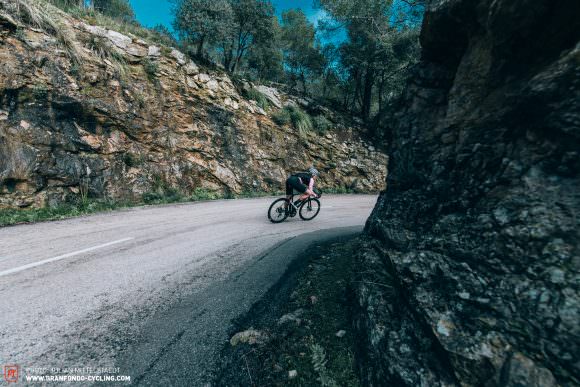
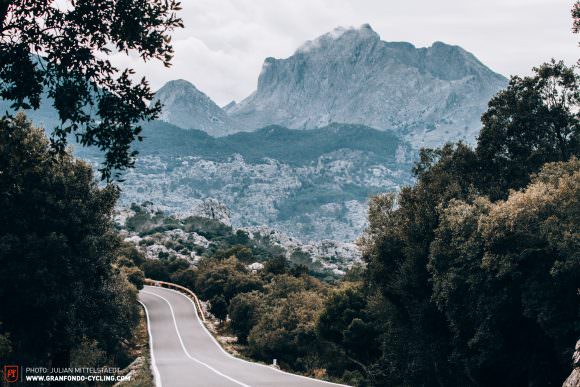
When it comes to safe riding, the performance of the brakes, the bike’s stability and its susceptibility to crosswinds are key factors: the better the brakes and the more stable the bike, the more concentration you’ve got spare, ergo the faster speeds you can reach. Comfort – in this context – is therefore another important parameter.
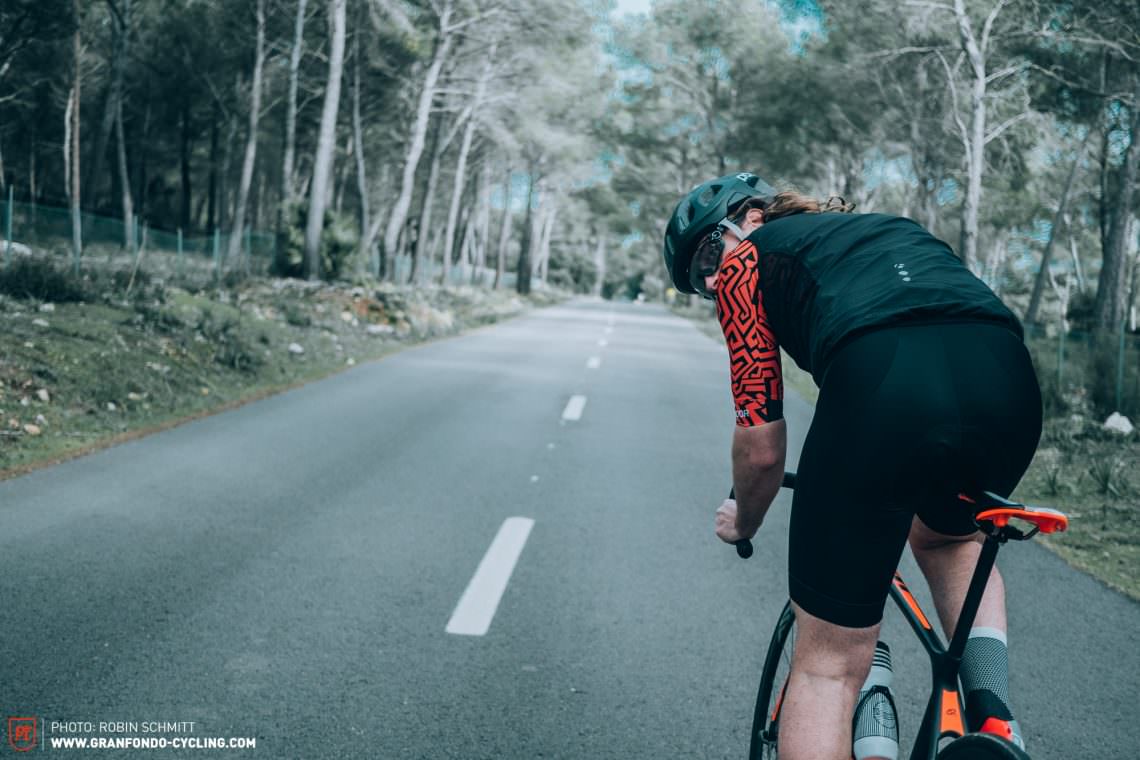
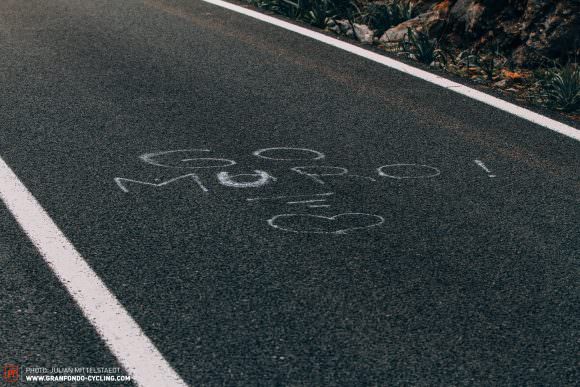

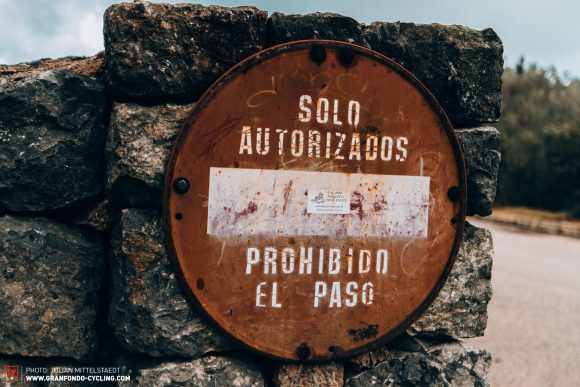

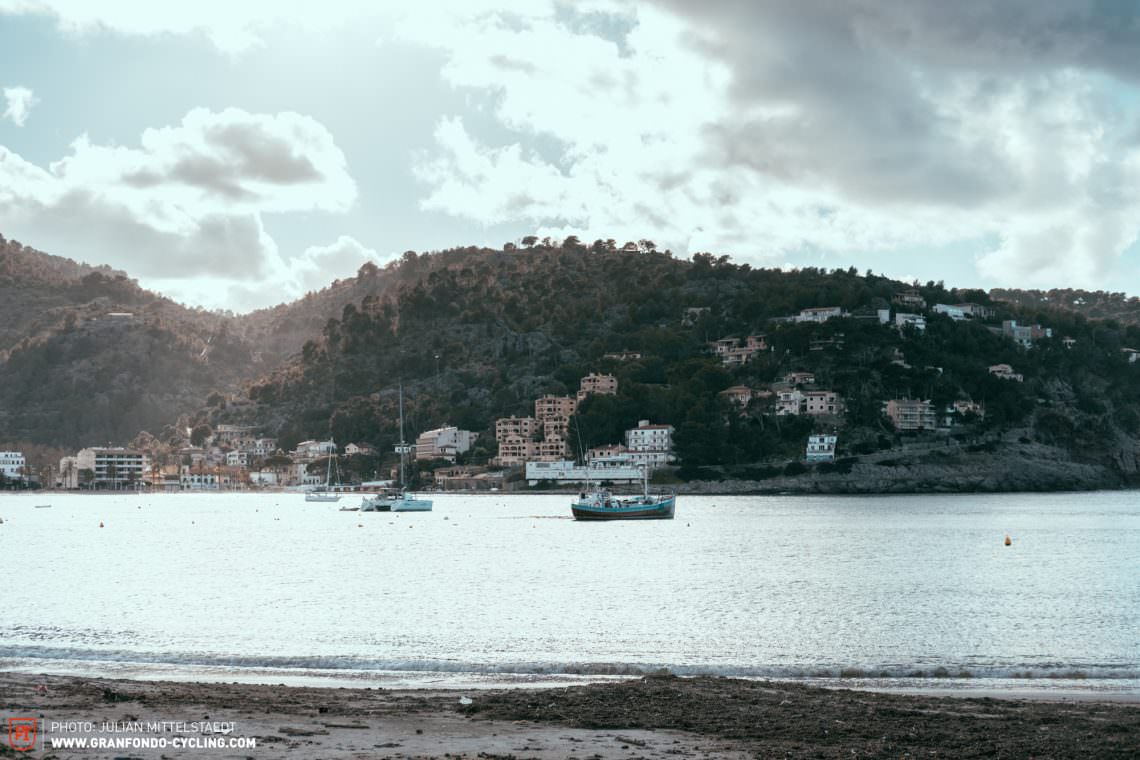
What sort of a rider are you? Meet our test riders
Amateur racers that knock back 20,000 kilometres per year, professional test riders, fixed gear racers, carbon engineers, and full-on beginners. Our test team encompassed everything from a 90 kg male to a 50 kg female, with as many riding preferences as partialities for how they take their coffee in the morning and what beverage they’ll turn to after a ride (beer vs. red wine vs. gin & tonic).


Highlights, disappointments and revelations
This group test revealed vast gulfs between current models, exposed design concepts that left us perplexed, and uncovered questionable component choices that threatened to destroy what could be a successful bike. One can tell which bikes were built around data, hurriedly plucked components from soulless spreadsheets; and, of course, which models had undergone thoughtful consideration by an experienced team of testers to create a unity that’s ready for consumers.
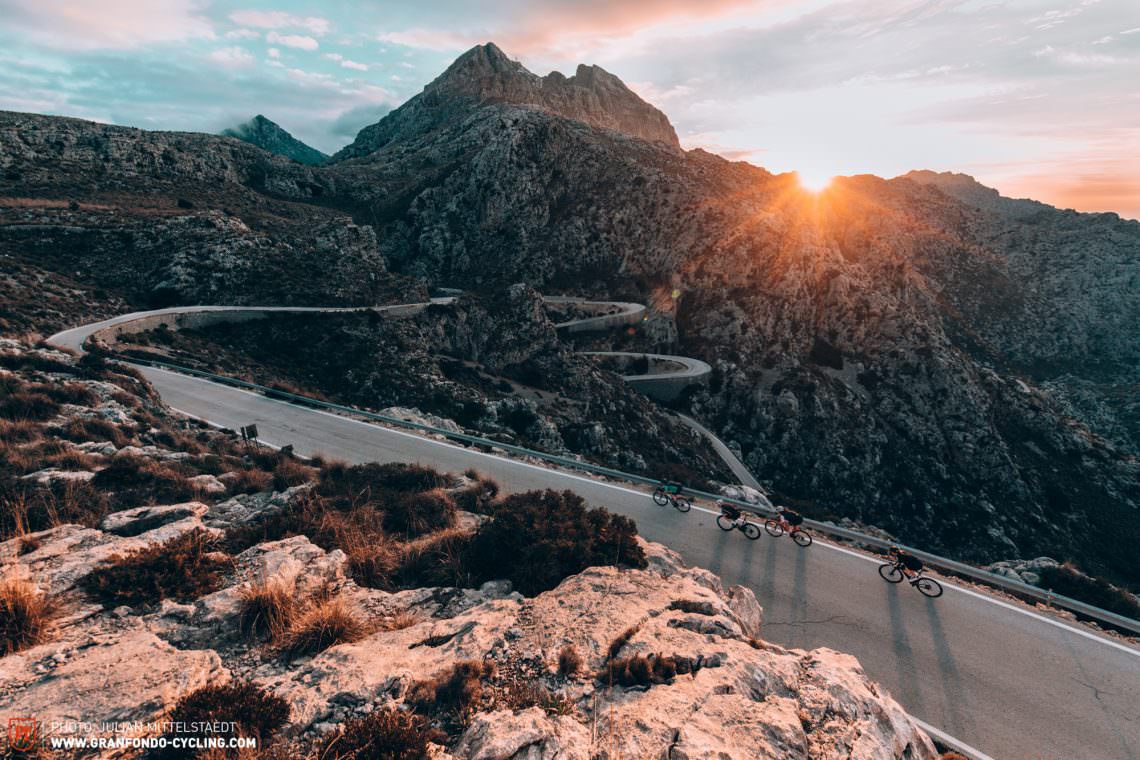
Do we need disc brakes?
Braking is madly complex. We saw many conventional rim brakes that delivered a superb performance, while others left us disappointed, and some were so poor they posed a serious risk to the rider’s safety. Rim brakes survive or fall on brake pad choice, different compounds have a major impact on how they perform. In one instance where the lack of disc brakes wasn’t mourned, the Campagnolo Record together with the Campagnolo Bora One wheels offered fairytale-esque performance, precise control and effortless modulation. But it can be argued that disc brakes are certainly the better option for less experienced riders, providing smooth modulation and predictability in all weather and road conditions. That extra kilo is something you’ll just have to accept.
How important is aero?
‘Aero is everything’ is so yesterday. ‘Good times’ is today’s mantra. What we’re seeing these days is that certain manufacturers accept compromise to improve a bike’s aerodynamics, essentially giving their bikes a ‘wow’ effect on paper but only providing a minimal impact on free speed – in fact, it’s an impact that’s arguably more psychological. The compromise often comes at the expense of usability, turning repairs and servicing into mammoth missions. Features like Trek’s aero Vector Wings for the front brakes or Rose’s sidewind-sensitive deep rims might look appealing, but their value for day-to-day riding is minimal. ‘Smart Simplicity’ is the answer here, much like Canyon’s Aerocockpit that has easy access to the Di2 junction box despite its full integration and sleek look.
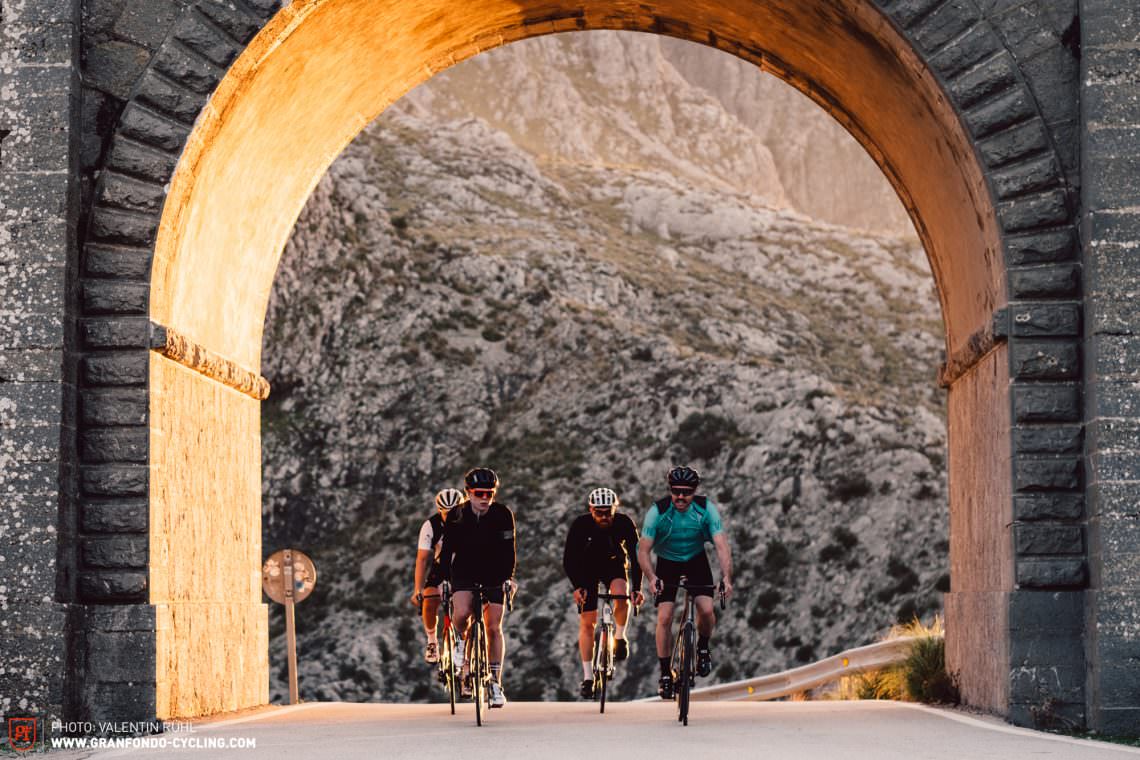
What does comfort even mean?
Most lab tests that aim to quantify comfort are based on incorrect parametres; you can’t determine comfort simply by measuring the seatpost’s vertical flex because the choice of material may have inbuilt damping characteristics that are not being taken into consideration. Carbon is super rigid and doesn’t have much (if any) intrinsic damping, so in the pursuit of comfort today’s carbon-framed bikes feature various complex technologies (i.e. Zertz inserts, flexing seatposts, Iso speed) to suspend the rider; some bikes have in-build damping, while others just flex. This leads to huge differences in terms of comfort, control and stability. Think of a mountain bike: full suspension models only give the control and comfort if the springs have damping – otherwise you’ll be bouncing like a rubber ball all over the trail. We know power is nothing without control, well flex is nothing without damping.
What’s the best choice of material then?
99 % would probably vote for carbon, and they’d arguably be right if stiffness and weight were the only credentials. Yet the whole package needs to be considered. The wrong saddle, a cockpit with flex, poor tire pressure, or overly stiff wheels can make just as much of an impact as the frame material on how the bike rides. Modern carbon bikes rely on special lay-ups and feats of engineering to imitate the valued characteristics of a material that we’ve cherished for decades: steel. And, perhaps unsurprisingly, steel is having something of a revival, of which even the industry’s biggest players want a piece of.
Tops & Flops
Often small details can make a huge difference: seamless integration, first-class ergonomics and carefully selected parts. Easier said than done – here are some of the tops and flops from this grouptest.
Tops
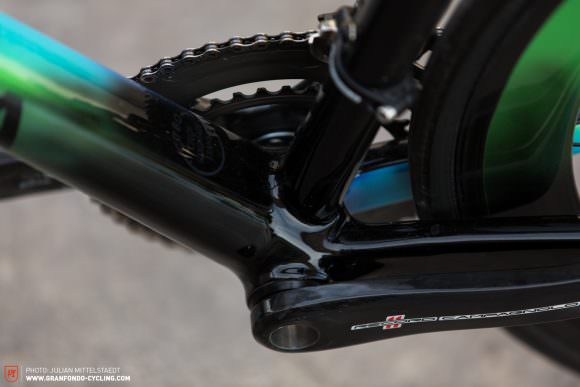
TDespite its classic-style slim frame, the bottom bracket on the Festka is super stiff, proving that oversize isn’t a prerequisite for performance.

Canyon’s integrated cockpit doesn’t just look and feel good to ride, its design also permits simple access to the Shimano Di2 junction box, so servicing doesn’t have to suffer at the hands of integration.

Cycling aficionados will fall for the charm of Stelbel’s timeless design features (just look at that integrated seat post clamp) and the oh-so-contemporary yet agelessly impeccable design of the Canyon.

he Standert comes with an affordable yet first-rate spec that disproves any theory that performance only comes at a premium.
Flops
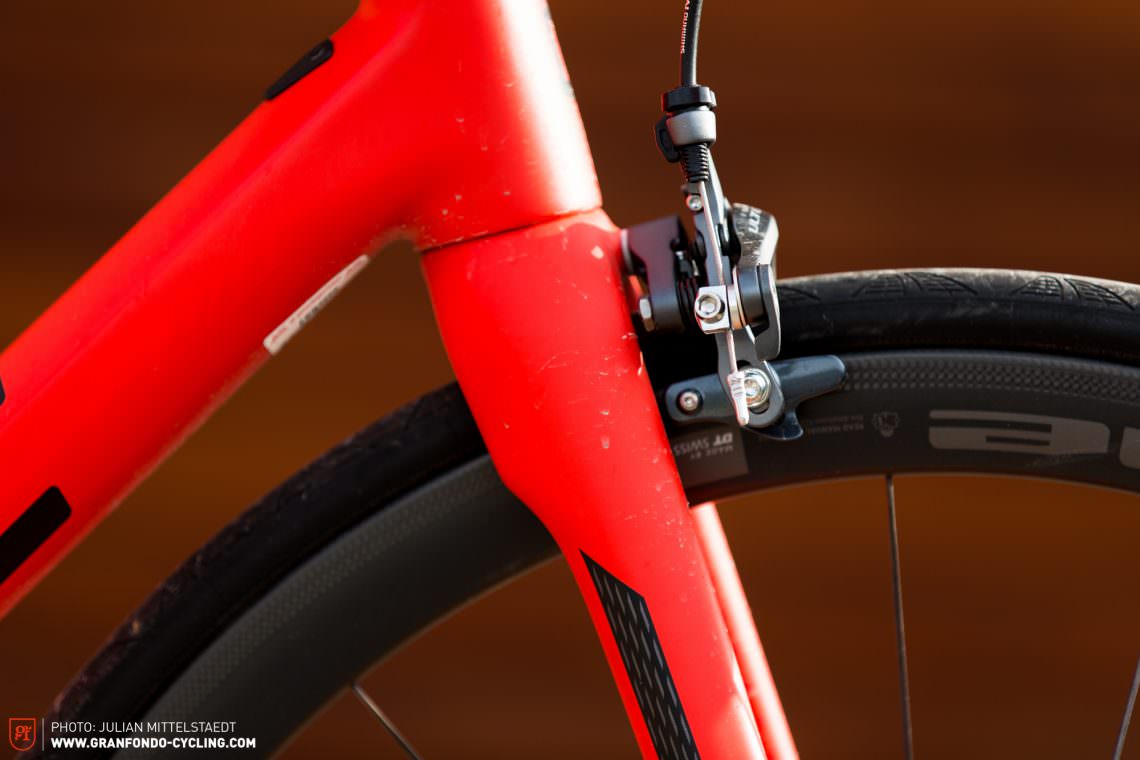
The braking performance on the BMC isn’t just way below par; it’s also a safety concern.
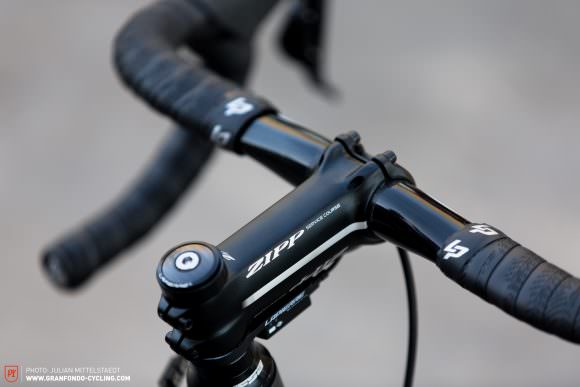
Certain parts can ruin the performance and handling of a bike in one fell swoop. The Zipp Carbon bar is the culprit on the Lapierre.

Shelling out €14,000 should be a guarantee for idyllic integration, yet Festka have missed the mark with their approach to the Campagnolo EPS interface. BMC, Cannondale, Cervélo, Giant and Lapierre face the same struggle with the Shimano Di2 junction box, but they’re not really batting in the same price category.
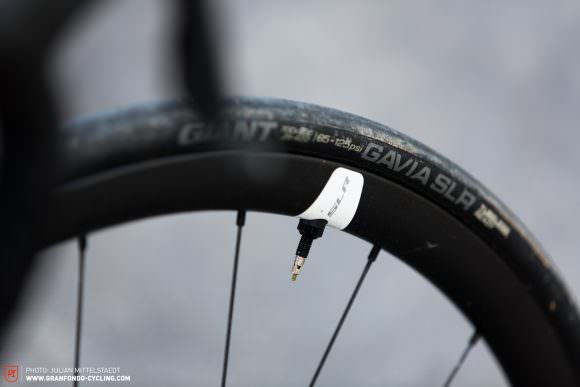
Both Canyon and Giant cut back on the tires at the cost of ride.

Just because carbon can be used in a myriad of constructions, it doesn’t mean you constantly have to reinvent the wheel. Certain designs will make industry designers weep.

Integration is good when done well, but adjusting the seat post on the Cervélo, Giant and Heroin is fiddly, and the clamp even leaves marks on the Trek.
The test fleet – Standout bikes, the test winner and the buyer’s choice
The Stelbel carves it’s own road through the impressive carbon competition, delivering an outstanding performance, a timeless design and tons of lovingly and meticulously crafted features. As such, it rolls off into the sunset with the test win. The Ultimate CF SLX Disc from Canyon offers the best all-round performance, which secures its title as the best value. The Festka exceeds any budget we’ve ever met, but is certainly deserving of a title – could it be THE ultimate racing bike in this test field? At less than a quarter of the price of the Festka (more than € 10,000 less!), the Standert Kreissäge proffers a push-it-past-the-limits performance with its aluminium frame and wholly considered spec. For ambitious riders with competitive harborings, the Cannondale is a brilliant total package (providing you can deal with its colourway). The Heroin H1 Limited Edition feels like a more nimble and more exclusive version of the Canyon Ultimate CF SLX Disc, yet comes with one key difference: a 3x higher price tag.
Truth hurts, but honesty wins!
The group test threw out some surprising revelations: Look beyond the common criteria like components, weight and price and consider the bike as a whole. On the following pages you’ll read reviews that haven’t regurgitated marketing hype but prioritized reality: what does it really feel like to ride this bike? Where does the bike excel, and where does it struggle? How much budget might I need if I want to customize the bike to suit my own riding style? Is it good enough for Mallorca? Is it good enough for me?
Our group test approach – and our ultimate test winner – might surprise a few readers, as we go against the grain and challenge how things have always been done. Bikes simply can’t be defined by measurements taken in labs. There’s more to riding fast than a bike’s stiffness-to-weight ratio and aerodynamic design. Both our test winner and the best value tip offer the full package that can take on any roads at any time.
All bikes in test: BMC Teammachine SLR01 | Cannondale SuperSix Evo HiMod Ultegra Di2 Disc | Canyon Ultimate CF SLX Disc 8.0 Di2 | Cervélo S3 Disc Ultegra Di2 | Festka Spectre Space Odyssey Edition | Giant TCR Advanced Pro Disc | Heroïn H1 Limited Edition | Lapierre Xelius SL 700 Ultimate | Rose X-Lite CDX 8800 | Standert. Kreissäge | Stelbel Antenore | Trek Madone 9.5 Ultegra Di2
This article belongs to the GRAN FONDO Issue #004. For the full interactive experience we recommend reading it in our magazine app for iPhone & iPad – it’s awesome – and free!
Did you enjoy this article? If so, we would be stoked if you decide to support us with a monthly contribution. By becoming a supporter of GRAN FONDO, you will help secure a sustainable future for high-quality cycling journalism. Click here to learn more.
Words: Robin Schmitt, Manuel Buck, Benjamin Topf Photos: Julian Mittelstädt, Valentin Rühl


